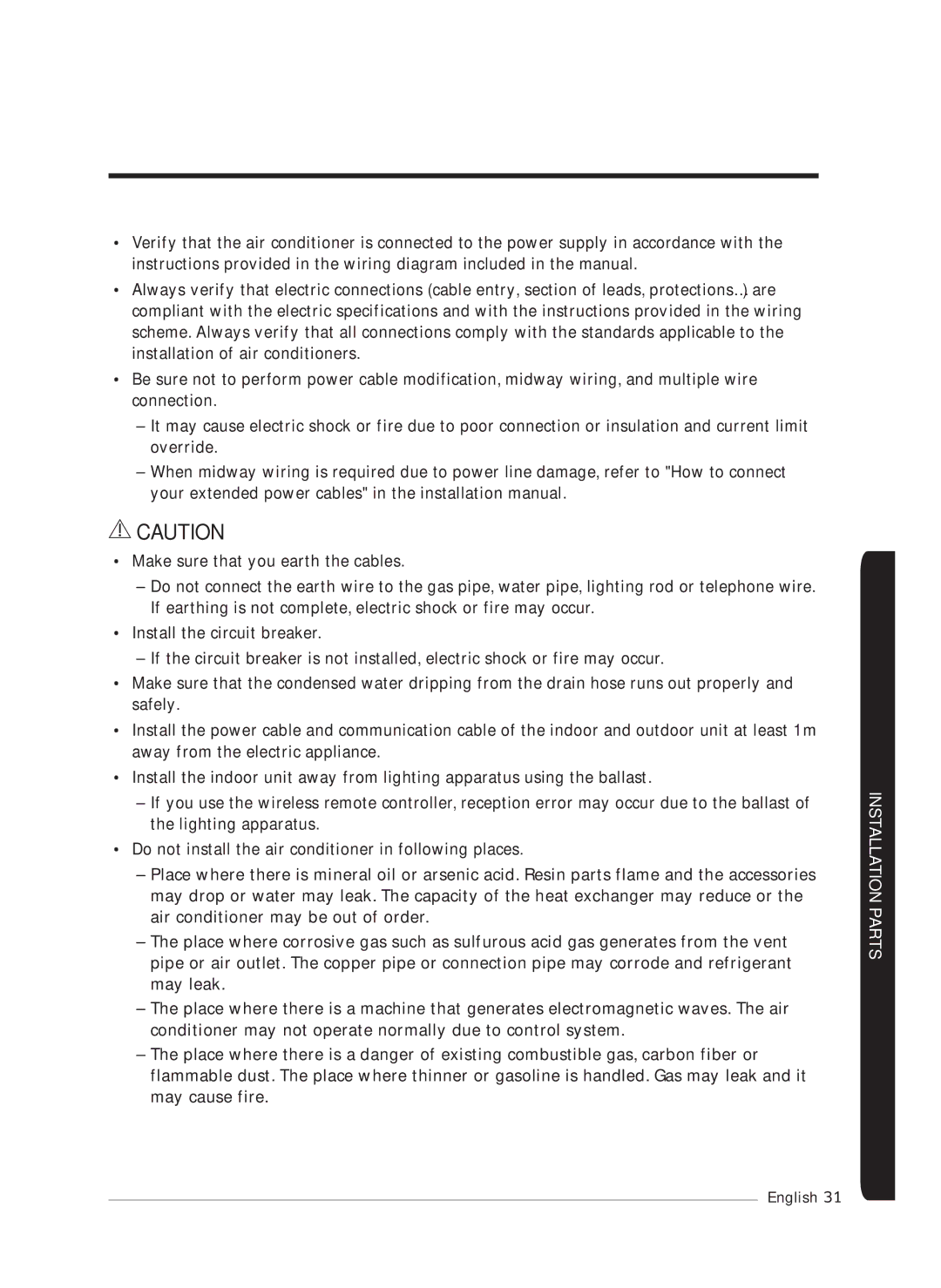•Verify that the air conditioner is connected to the power supply in accordance with the instructions provided in the wiring diagram included in the manual.
•Always verify that electric connections (cable entry, section of leads, protections…) are compliant with the electric specifications and with the instructions provided in the wiring scheme. Always verify that all connections comply with the standards applicable to the installation of air conditioners.
•Be sure not to perform power cable modification, midway wiring, and multiple wire connection.
––It may cause electric shock or fire due to poor connection or insulation and current limit override.
––When midway wiring is required due to power line damage, refer to "How to connect your extended power cables" in the installation manual.
 CAUTION
CAUTION
•Make sure that you earth the cables.
––Do not connect the earth wire to the gas pipe, water pipe, lighting rod or telephone wire. If earthing is not complete, electric shock or fire may occur.
•Install the circuit breaker.
––If the circuit breaker is not installed, electric shock or fire may occur.
•Make sure that the condensed water dripping from the drain hose runs out properly and safely.
•Install the power cable and communication cable of the indoor and outdoor unit at least 1m away from the electric appliance.
•Install the indoor unit away from lighting apparatus using the ballast.
––If you use the wireless remote controller, reception error may occur due to the ballast of the lighting apparatus.
•Do not install the air conditioner in following places.
––Place where there is mineral oil or arsenic acid. Resin parts flame and the accessories may drop or water may leak. The capacity of the heat exchanger may reduce or the air conditioner may be out of order.
––The place where corrosive gas such as sulfurous acid gas generates from the vent pipe or air outlet. The copper pipe or connection pipe may corrode and refrigerant may leak.
––The place where there is a machine that generates electromagnetic waves. The air conditioner may not operate normally due to control system.
––The place where there is a danger of existing combustible gas, carbon fiber or flammable dust. The place where thinner or gasoline is handled. Gas may leak and it may cause fire.

![]() CAUTION
CAUTION